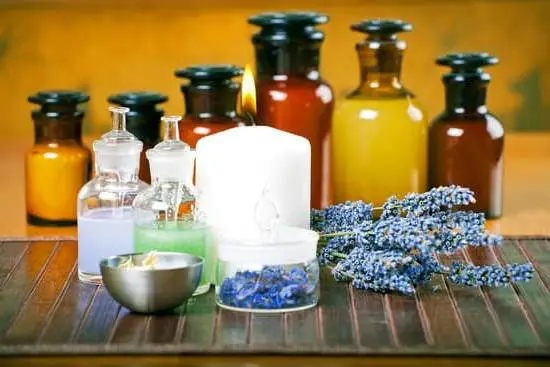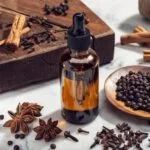Aromatherapy has been used for centuries as a holistic healing treatment that harnesses the natural scents of essential oils to promote overall well-being. In this article, we will delve into the world of basic aromatherapy massage, exploring its benefits and discussing everything you need to know to get started.
Aromatherapy massage combines the therapeutic benefits of essential oils with the techniques of a traditional massage. By incorporating these aromatic plant extracts into the massage experience, it is believed to enhance relaxation, reduce stress, and alleviate physical and emotional discomfort. Understanding the basics of aromatherapy massage is essential for anyone looking to explore this ancient practice.
In this section, we will take a closer look at the benefits of essential oils in aromatherapy massage, including their ability to soothe muscles, calm the mind, and promote a sense of well-being. We will also discuss how aromatherapy can be incorporated into your self-care routine and provide valuable resources for those interested in learning more about this therapeutic practice.
Whether you are new to aromatherapy or a seasoned enthusiast, there is something for everyone in this comprehensive guide.
Understanding the Basics of Aromatherapy Massage
When receiving a basic aromatherapy massage, it is important to understand what to expect during the experience. First and foremost, it is crucial to communicate with your massage therapist about any specific concerns or preferences you may have. This includes discussing any allergies or sensitivities you may have to certain essential oils, as well as any areas of your body that may require special attention or that you prefer not to be massaged.
During an aromatherapy massage, essential oils are usually mixed with a carrier oil before being applied to the skin. The therapist will work the oil into your skin using various massage techniques, such as effleurage (long, sweeping strokes), petrissage (kneading and squeezing motions), and friction (deep pressure applied across the grain of the muscles).
The benefits of receiving a basic aromatherapy massage include relaxation, stress reduction, improved circulation, and relief from muscle tension. The aroma of the essential oils also has therapeutic effects on the mind and body. It is important to note that while some people may experience immediate positive effects from their first session, others may require multiple sessions before experiencing noticeable benefits.
| Benefit | Description |
|---|---|
| Relaxation | Aromatherapy massages are known for inducing deep relaxation due to the calming effects of essential oil scents. |
| Stress Reduction | The soothing touch of a massage therapist combined with the stress-relieving properties of essential oils can significantly reduce stress levels. |
| Improved Circulation | The massage techniques used during an aromatherapy massage can improve blood flow throughout the body. |
Choosing the Right Essential Oils for Aromatherapy Massage
When it comes to choosing the right essential oils for aromatherapy massage, it’s important to consider both the aroma and the therapeutic properties of the oils. As a beginner, it can be overwhelming to navigate through the wide variety of essential oils available, but understanding a few key oils can help you get started on your aromatherapy journey.
Lavender oil is one of the most popular choices for aromatherapy massage due to its calming and relaxing properties. It is often used to reduce stress and anxiety, as well as promote restful sleep. Another essential oil commonly used in massage is peppermint oil, which has a cooling effect on sore muscles and can help alleviate headaches and migraines.
For those looking to uplift their mood and create a sense of positivity during their massage, citrus essential oils such as sweet orange or lemon are excellent choices. These oils are known for their bright, refreshing scents that can help boost energy levels and improve overall mood.
As a beginner, it’s important to start with a small selection of versatile essential oils that you can use for a variety of purposes. Some other beginner-friendly options to consider include eucalyptus for respiratory support, chamomile for relaxation, and tea tree for its antimicrobial properties. By familiarizing yourself with a few key essential oils, you can begin to explore the benefits of basic aromatherapy massage at home or with clients.
The Science Behind Aromatherapy Massage
Aromatherapy massage is a holistic healing treatment that uses natural plant extracts, known as essential oils, to promote physical and emotional well-being. The practice of using essential oils for therapeutic purposes can be traced back thousands of years and has been embraced by various cultures around the world. Aromatherapy works through the sense of smell and skin absorption, with the essential oils having different effects on the body.
Essential oils used in aromatherapy are believed to have an impact on the limbic system, which is a part of the brain that plays a role in emotions, behaviors, sense of smell, and long-term memory. When essential oils are inhaled or applied topically during a massage, they can trigger responses in the limbic system, influencing heart rate, stress levels, blood pressure, breathing, and immune function.
This is why aromatherapy massage is often used as a complementary therapy for a range of conditions such as anxiety, depression, insomnia, pain management and more.
There are over 90 types of essential oils available and each one has its unique properties and benefits. Some common essential oils used in aromatherapy massage include lavender for relaxation and stress relief, peppermint for energy boost and headache relief, tea tree for anti-inflammatory and antiseptic effects,and eucalyptus for respiratory support. It’s important to note that these essential oils must be properly diluted before use in an aromatherapy massage to avoid adverse reactions or skin irritation.
| Essential Oil | Benefit |
|---|---|
| Lavender | Relaxation and stress relief |
| Peppermint | Energy boost and headache relief |
| Tea Tree | Anti-inflammatory and antiseptic effects |
Step-by-Step Guide to Giving a Basic Aromatherapy Massage
Giving a basic aromatherapy massage can be a relaxing and rejuvenating experience for both the masseuse and the recipient. By incorporating essential oils into the massage, you can enhance the therapeutic benefits and create a more holistic wellness experience. Here are some step-by-step guide to giving a basic aromatherapy massage:
- Prepare the massage space: Set up a comfortable and warm environment for the massage. Make sure you have clean towels, cushions or pillows, and a comfortable surface for the recipient to lie on.
- Choose the right essential oils: Select essential oils that promote relaxation, such as lavender, chamomile, or ylang-ylang. Dilute the essential oils with a carrier oil, such as sweet almond oil or coconut oil, before applying them to the skin.
- Begin with gentle strokes: Start the massage with gentle and long strokes to warm up the muscles and relax the recipient. Focus on areas of tension or soreness while using smooth and even pressure.
Using these techniques can help promote relaxation, reduce stress, and relieve muscle tension. The use of essential oils in a basic aromatherapy massage can also enhance these benefits by providing additional therapeutic effects through inhalation and absorption into the skin.
Remember to communicate with your recipient throughout the massage to ensure their comfort and adjust your techniques accordingly. With practice and attention to detail, you’ll be able to give an effective basic aromatherapy massage that promotes overall well-being for your recipient.
Safety Precautions for Aromatherapy Massage
Choosing the Right Essential Oils
When it comes to performing a basic aromatherapy massage, one of the most important considerations is choosing the right essential oils. Not all essential oils are created equal, and some may not be suitable for use on the skin or may cause adverse reactions in certain individuals.
It’s essential to do thorough research on each essential oil before incorporating it into your massage routine. Additionally, always perform a patch test on a small area of skin to ensure there are no allergic reactions.
Dilution and Carrier Oils
Another important safety precaution to consider when giving an aromatherapy massage is proper dilution of essential oils. Essential oils are highly concentrated and should never be applied directly to the skin.
They should always be diluted in a carrier oil, such as almond oil or coconut oil, to reduce the risk of irritation or sensitization. The recommended dilution ratio is typically 2-3 drops of essential oil per tablespoon of carrier oil for adult use, but this can vary depending on the individual and the specific essential oil being used.
Contraindications and Precautions
It’s crucial to be aware of any contraindications and precautions associated with specific essential oils before using them in an aromatherapy massage. Some essential oils are not safe for use during pregnancy or may interact with certain medications. Additionally, certain health conditions such as asthma or epilepsy may require extra caution when using certain essential oils. Always consult a qualified aromatherapist or healthcare professional if you have any concerns about using essential oils for massage therapy.
By taking these safety precautions into consideration, you can ensure that your aromatherapy massage experience is enjoyable and beneficial without any negative side effects.
Incorporating Aromatherapy Into Your Self-Care Routine
Aromatherapy massage is a wonderful way to incorporate the benefits of essential oils into your self-care routine. By incorporating aromatherapy into your wellness lifestyle, you can experience the therapeutic effects of essential oils while also promoting relaxation and stress relief. Whether you are looking to boost your mood, alleviate anxiety, or simply unwind after a long day, aromatherapy massage can be a valuable addition to your self-care practices.
To incorporate aromatherapy into your self-care routine, it is important to first understand the different properties of essential oils and how they can benefit your overall well-being. For example, lavender essential oil is known for its calming and relaxing properties, making it an ideal choice for promoting sleep and reducing stress. On the other hand, peppermint essential oil has invigorating and energy-boosting effects, perfect for enhancing focus and alertness during the day.
Once you have selected the essential oils that align with your self-care goals, you can incorporate them into your basic aromatherapy massage practice. Whether you choose to visit a professional massage therapist or perform self-massage at home, adding a few drops of your chosen essential oil to a carrier oil such as coconut or sweet almond oil can enhance the benefits of the massage.
By incorporating aromatherapy into your self-care routine, you can elevate your wellness lifestyle and experience the therapeutic effects of essential oils on both mind and body.
Where to Learn More About Aromatherapy Massage
Aromatherapy massage is a wonderful way to relax, unwind, and promote overall wellness. By incorporating the use of essential oils, this type of massage can have numerous benefits for both the body and mind. While this article has provided a comprehensive guide to the basics of aromatherapy massage, there is always more to learn and explore for enthusiasts who are eager to dive deeper into this practice.
For those who are interested in delving further into the world of aromatherapy massage, there are plenty of resources available to expand your knowledge. Books, websites, and even courses can provide a wealth of information on different essential oils, massage techniques, and how to customize treatments for specific needs. Additionally, seeking out qualified instructors or practitioners can offer valuable hands-on experience and personalized guidance.
Furthermore, joining communities or forums dedicated to aromatherapy and massage can be a great way to connect with like-minded individuals and gain insights from their experiences. These platforms are often rich sources of information and discussions that can enhance your understanding and appreciation for the art of aromatherapy massage. Remember that continued education and exploration in this field can lead to a deeper appreciation for the benefits and intricacies of basic aromatherapy massage in all its forms.
Frequently Asked Questions
What Does an Aromatherapy Massage Involve?
An aromatherapy massage involves the use of essential oils derived from plants to enhance the benefits of the massage. The therapist may customize the blend of oils based on the client’s needs and preferences, and these oils are then applied during the massage.
What Are the 7 Basic Massage?
The 7 basic types of massage include Swedish massage, deep tissue massage, hot stone massage, sports massage, trigger point therapy, reflexology, and prenatal massage. Each type focuses on different techniques and targets specific areas or conditions.
What Techniques Are Used in Aromatherapy Massage?
Techniques used in aromatherapy massage typically involve gentle, rhythmic strokes to promote relaxation and relieve muscle tension. The therapist may also incorporate acupressure points or lymphatic drainage techniques to enhance the therapeutic effects of the essential oils. Overall, the goal is to create a soothing and rejuvenating experience for the client.

Are you looking for a natural way to improve your health and wellbeing?
If so, aromatherapy may be the answer for you.





